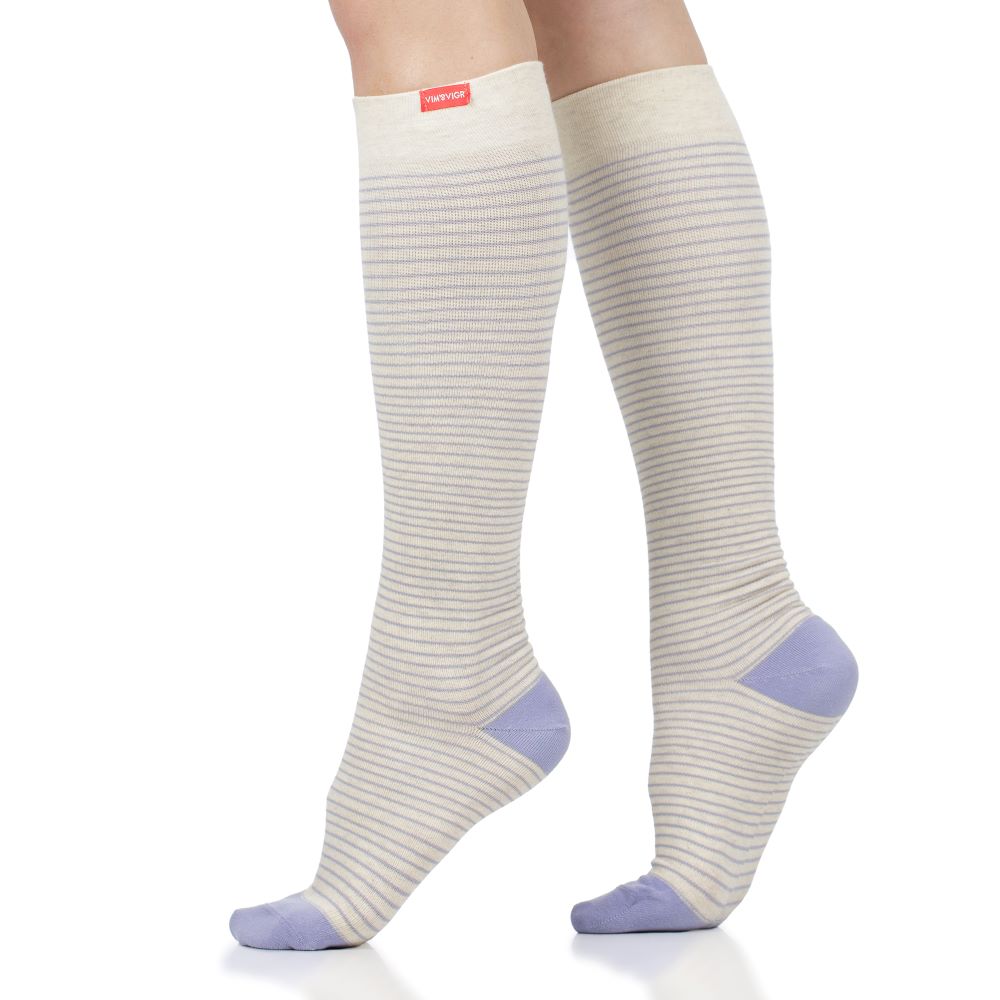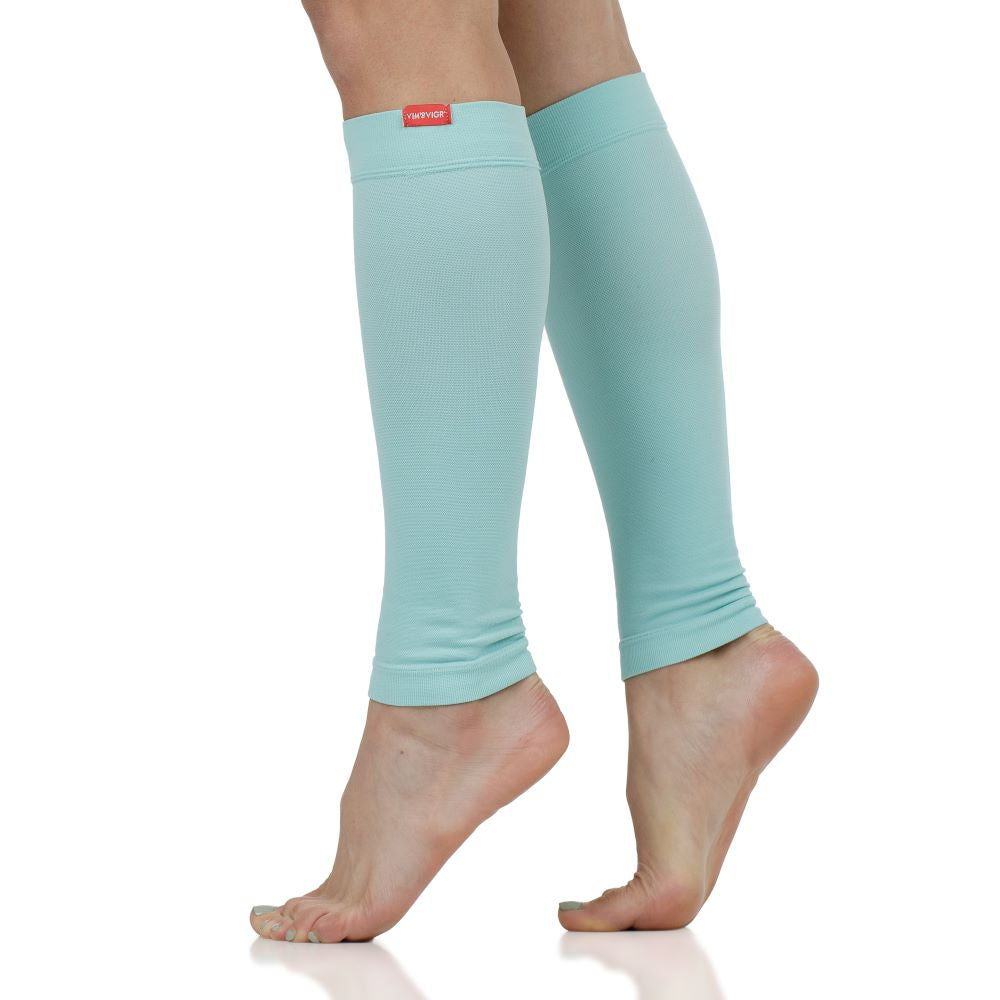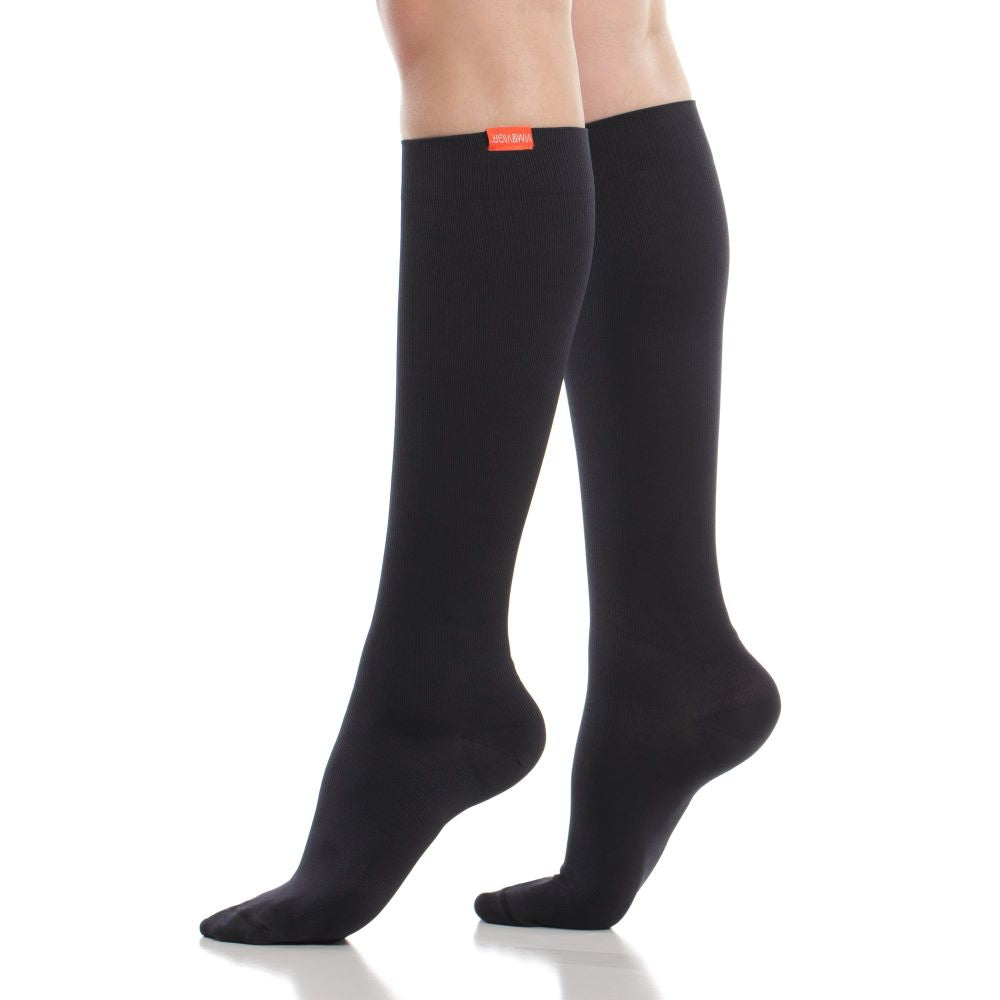How to Prep for a Flight If You Are at Risk of DVT

by Caitlin Reid
Long flights can be exhausting, but they can also be dangerous if you’re at risk of developing DVT (deep vein thrombosis) and haven’t prepared. Thanks to intense research on the subject though, there are a number of easy ways you can fly safely, minimizing your risk of DVT formation.
What Are the Risk Factors for Developing DVT During Air Travel?
A number of people, including healthy people on certain prescription medications, are more at risk of developing DVT while flying than others. Those people include:
- Older individuals
- Pregnant women
- Those who have recently undergone surgery
- Obese individuals
- Women taking birth control pills
- Women taking hormone replacement therapy medications
- People with an immobilized limb or with poor mobility
- Smokers
- Individuals with genetic risk factors such as anticoagulant deficiencies
- Individuals with heart disease or stroke history
The length of your flight matters, too. Long-distance flights of eight hours or more are associated with a two to fourfold increase in the risk of DVT, but only in those individuals who have underlying risk factors.
Luckily, though, if you fit into one of the categories above, there are a number of things you can do to help minimize your heightened risk of developing a venous thromboembolism.
1. Compression Socks are an Effective DVT Prevention Tool
The most effective strategy you have to minimize your risk of developing a DVT due to immobility during a long flight is wearing compression socks. The evidence agrees.
A review of nine studies assessed the effects of wearing compression stockings versus not wearing them in people traveling on flights lasting at least four hours. The researchers found high‐quality evidence that airline passengers wearing compression stockings can expect a substantial reduction in the incidence of symptom-less DVT.
Considering symptom-less DVT is a very serious thromboembolism complication, this research provides a compelling reason why you should wear compression socks before you travel, on the plane and on the days after you fly. DVT symptoms can appear days later, so boosting circulation around your flight time, not just while you’re in the sky, is a great way to prevent DVT formation.
With a rapidly growing body of research into the health benefits of compression socks, great brands have blended functionality with fashion to create stylish compression garments. Whether you want gentle compression, or you’re seeking medical-grade compression of 20 to 30 mmHg, your compression socks can look fun and funky while boosting your circulation while you travel.
2. Hydrate Before You Fly and Avoid Alcohol During Your Flight
Sipping a glass of wine or your favorite beverage at 32,000 feet may be a fun novelty, but it may not be worth it, particularly if you’re already at risk of developing DVT.
One study examined DVT development and found that a number of preventative measures can help those susceptible to developing venous thromboembolism during air travel. These included hydration. To avoid becoming dehydrated, drink your normal two liters of water per day leading up to your day of travel. During the flight, avoid alcoholic beverages as they inhibit the secretion of ADH (antidiuretic hormone), which forces you to make more frequent trips to the lavatory, causing dehydration. Other mid-flight precautions include frequent walks, calf-muscle exercises and, of course, compression stockings.
3. Skip the Sleeping Pills and Tranquilizers
Whether you’re a nervous flyer or you desperately need sleep on a red-eye flight across the country, it can be tempting to drop a sleeping tablet or tranquilizer before you fly. Unfortunately, this one simple tablet could greatly increase your risk of developing DVT.
Deep vein thrombosis resulting in life-threatening pulmonary thromboembolism is higher during air travel due to the fact that most people are immobile on planes, inhibiting circulation in the lower leg. If you take a sleeping pill, you will likely fall asleep for the entire trip (if it is up to eight hours), causing you to be almost totally immobile for the duration of the flight.
If you’re dubious because you’re a restless sleeper, it’s important to differentiate between real sleep and sleeping-pill-initiated sleep. Sleeping pills don’t work in the same way as sleep. They target the brain cells in your cortex, turning them off. So rather than putting you to sleep, a sleeping pill gives an effect closer to unconsciousness. During this state, you are very unlikely to move at all, putting you at a higher risk of DVT. Tranquilizers work in a similar way.
If you’re a really nervous flyer, talk to your health provider about a long-term solution such as counseling.
The Bottom Line
Knowing how to improve blood circulation is key to preventing DVT during flying, particularly if you’re already at higher risk due to genetic or acquired factors. Know when to wear compression socks, and use them before, during and after air travel. If you’re worried they’ll ruin your outfit, don’t stress. There are countless brands offering stylish, fun and even subtle-looking compression socks and stocking options to keep you looking chic and fashionable in the air (and once you hit the ground).
Caitlin Reid is a freelance journalist, copywriter and PR coordinator with over 10 years of experience
with clients around the world. She is also a physiotherapist with a special interest in holistic and
environmental well-being, blending the realms of evidence-based medicine with inspiring holistic health.
References:
www.scielo.br/scielo.php?pid=S1516-84842017000400349&script=sci_arttext
https://link.springer.com/article/10.1007/s12024-018-9991-9
https://www.cochranelibrary.com/cdsr/doi/10.1002/14651858.CD004002.pub3/abstract
https://vimvigr.com/collections/women-all-collections-compression-socks
https://vimvigr.com/collections/higher-compression-collection-20-30-mmhg
www.scielo.br/scielo.php?pid=S1516-84842017000400349&script=sci_arttext
https://www.abc.net.au/science/articles/2012/02/28/3441707.htm
https://www.thecut.com/2017/10/the-vicious-cycle-of-insomnia-and-sleeping-pills.html
https://vimvigr.com/collections/mens-collection
https://vimvigr.com/collections/compression-tights-sleeves


















Leave a comment